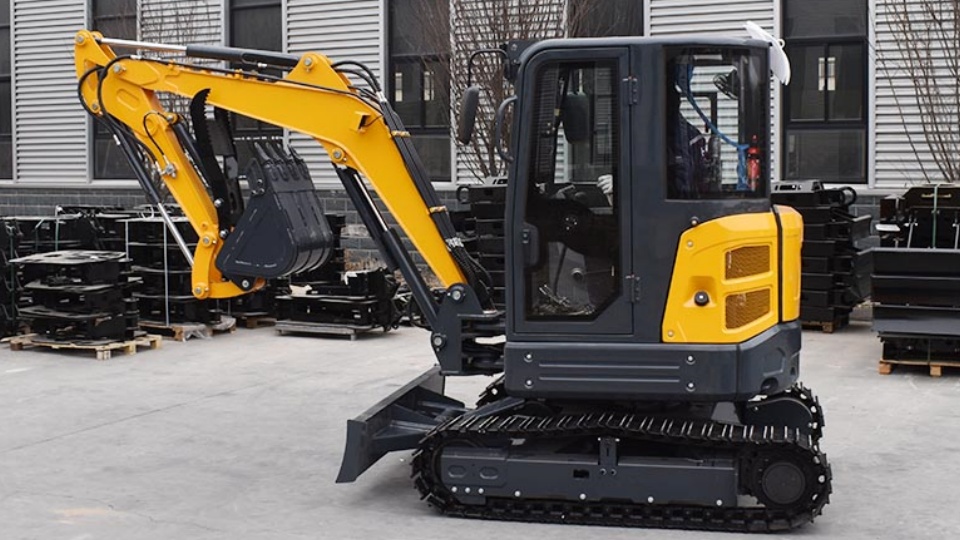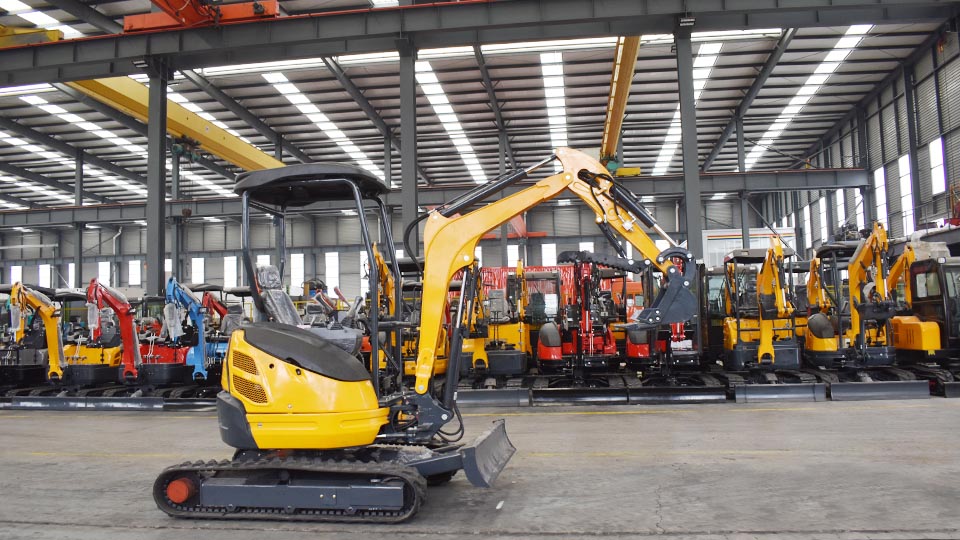I. Introduction
Excavators are the workhorses of construction, mining, and numerous other industries, tasked with digging, lifting, and moving earth and materials. However, the term "excavator" encompasses a broad range of machines, each designed for specific applications and environments. Understanding the diverse types of excavators available is crucial for selecting the right equipment for a particular project. This article provides a comprehensive overview of the different types of excavators, detailing their characteristics, applications, and advantages and disadvantages.
II. Mini/Compact Excavators
Characteristics:
Size and weight specifications: Typically weighing between 1 to 8 tons, these machines are designed for tight spaces.
Typical engine power and hydraulic capacity: Powered by smaller engines (10-50 horsepower) and equipped with efficient hydraulic systems.
Maneuverability and accessibility in tight spaces: Their compact size allows them to navigate narrow passages and work in confined areas.
Applications:
Residential landscaping and small construction projects: Ideal for digging trenches, installing pools, and general landscaping.
Utility work and trenching in confined areas: Used for laying pipes, cables, and other utilities in urban environments.
Interior demolition and renovation: Suitable for demolishing walls and floors within buildings.
Advantages and Disadvantages:
Pros: Portability, low operating costs, versatility in small spaces.
Cons: Limited digging depth and lifting capacity, not suitable for large-scale projects.
III. Standard/Crawler Excavators
Characteristics:
Tracked undercarriage for stability and traction: Provides excellent stability on uneven terrain.
Range of sizes and digging depths: Available in various sizes, with digging depths ranging from 15 to 30 feet or more.
Hydraulic system capabilities: Powerful hydraulic systems for efficient digging and lifting.
Applications:
General construction and earthmoving: Used for digging foundations, grading sites, and moving large volumes of earth.
Road construction and infrastructure projects: Essential for building roads, bridges, and other infrastructure.
Mining and quarry work: Used for extracting minerals and materials in mining operations.
Advantages and Disadvantages:
Pros: High digging force, exceptional stability on uneven terrain, versatile for various tasks.
Cons: Lower mobility compared to wheeled excavators, potential for ground damage due to tracks.
IV. Wheeled Excavators
Characteristics:
Rubber-tired wheels for mobility on paved surfaces: Allows for faster travel between job sites.
Steering and travel speed specifications: Equipped with steering systems and capable of speeds up to 20 mph.
Outriggers for stabilization: Provides stability when digging or lifting heavy loads.
Applications:
Urban construction and road maintenance: Ideal for working on paved surfaces and moving between sites quickly.
Utility work and pipe laying: Used for laying pipes and cables along roadsides.
Material handling and loading: Efficient for loading and unloading materials in urban environments.
Advantages and Disadvantages:
Pros: High mobility, faster travel speeds, less ground damage on paved surfaces.
Cons: Lower stability on uneven terrain, limited digging force compared to crawler excavators.
V. Long Reach Excavators
Characteristics:
Extended boom and arm for increased reach: Allows for digging and lifting at greater distances.
Modified hydraulic systems for long-distance operation: Ensures efficient operation at extended reach.
Structural reinforcements for stability: Provides stability when working at maximum reach.
Applications:
Dredging and waterway maintenance: Used for cleaning and maintaining rivers, canals, and harbors.
Demolition of tall structures: Allows for safe demolition from a distance.
Reaching remote or difficult-to-access areas: Useful for working in areas with limited access.
Advantages and Disadvantages:
Pros: Extended reach, ability to work in remote or difficult-to-access areas.
Cons: Reduced digging force at maximum reach, increased complexity and cost.
VI. Dredging Excavators
Characteristics:
Specialized buckets and hydraulic systems for underwater operation: Designed for efficient underwater digging.
Corrosion-resistant materials and seals: Ensures durability in aquatic environments.
Pontoon or barge-mounted platforms: Provides stability and mobility on water.
Applications:
River and harbor dredging: Used for removing sediment and debris from waterways.
Environmental remediation and cleanup: Essential for cleaning up contaminated sediments.
Underwater construction and maintenance: Used for building and maintaining underwater structures.
Advantages and Disadvantages:
Pros: Specialized capabilities for underwater work, efficient dredging operations.
Cons: High specialization, limited versatility in other applications.
VII. High Reach Demolition Excavators
Characteristics:
Extendable boom and arm for high-altitude demolition: Allows for safe demolition of tall structures.
Reinforced structure and protective features: Ensures safety and stability during demolition.
Specialized attachments (shears, pulverizers): Designed for efficient demolition work.
Applications:
Demolition of tall buildings and structures: Used for controlled demolition in urban areas.
Controlled demolition in urban areas: Minimizes the impact on surrounding structures.
Hazardous material removal: Allows for safe removal of asbestos and other hazardous materials.
Advantages and Disadvantages:
Pros: High-altitude reach, specialized demolition capabilities, increased safety.
Cons: High cost, complex operation, specialized training required.
VIII. Skid Steer Excavator Attachments
Characteristics:
Excavator attachments that connect to skid steer loaders: Converts a skid steer into a mini excavator.
Hydraulic connections and control systems: Allows for easy attachment and control.
Versatility in using a skid steer for light excavation work: Increases the versatility of a skid steer.
Applications:
Light trenching and digging: Ideal for small-scale excavation tasks.
Landscaping and site preparation: Used for grading, digging, and moving materials.
Small scale utility work: Suitable for laying pipes and cables in confined areas.
Advantages and Disadvantages:
Pros: Increases the versatility of a skid steer loader, lower cost compared to a dedicated excavator.
Cons: Limited digging power and depth compared to dedicated excavators, less efficient for large-scale projects.
IX. Considerations for Choosing the Right Excavator
Project Requirements:
Digging depth and reach: Match the excavator's capabilities to the project's requirements.
Lifting capacity and power: Ensure the excavator can handle the required loads.
Terrain and site conditions: Choose an excavator that can operate effectively in the given environment.
Operational Costs:
Fuel consumption and maintenance: Consider the long-term costs of operating and maintaining the excavator.
Operator training and labor: Ensure operators are properly trained and certified.
Transportation and logistics: Factor in the costs of transporting the excavator to and from job sites.
Environmental Factors:
Emissions and noise levels: Comply with local regulations regarding emissions and noise.
Ground disturbance and impact: Minimize the impact on the environment.
Local regulations: Adhere to all applicable regulations and permits.
X. Conclusion
The diverse range of excavators available caters to a multitude of applications, from small-scale residential projects to large-scale industrial operations. Selecting the right excavator for a specific task is crucial for maximizing efficiency, safety, and cost-effectiveness. By carefully considering project requirements, operational costs, and environmental factors, businesses can make informed decisions and ensure successful project outcomes. As technology continues to advance, we can expect to see further innovations in excavator design and capabilities, enhancing their performance and expanding their applications.
Post time:Sep-25-2020



